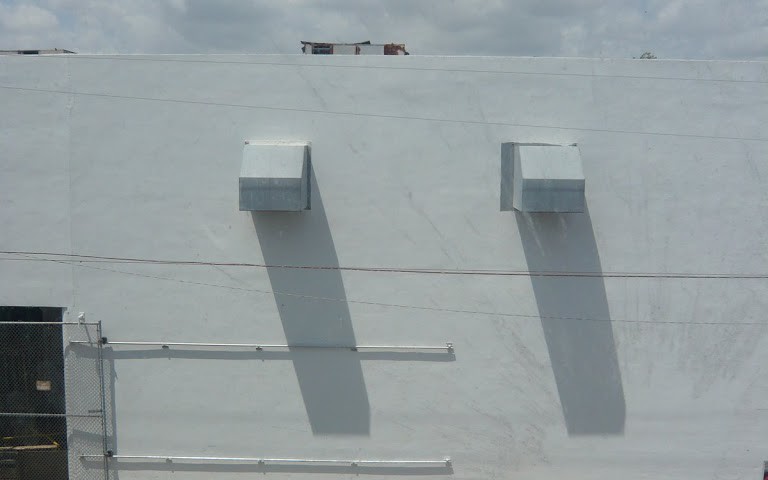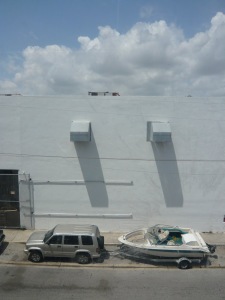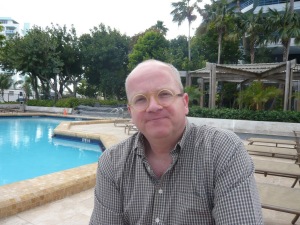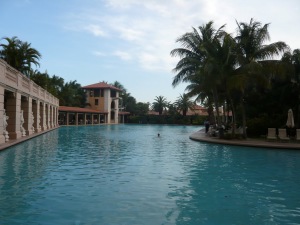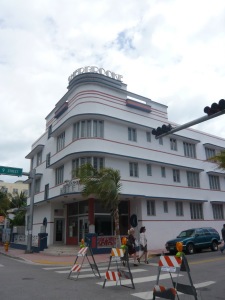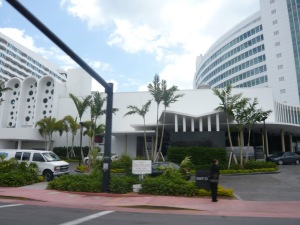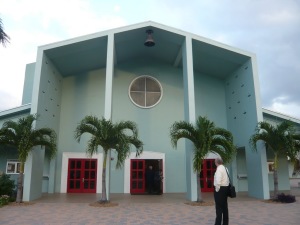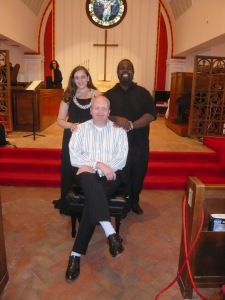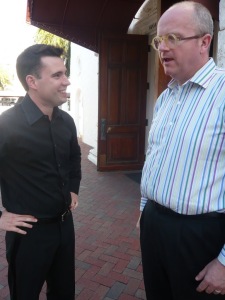The air is wet but clear, not dry and dusty. Everything is a little over the top, but like Los Angeles, it has an incredibly vibrant art scene and welcomes the newcomer. In comparison, cities like Boston, New York, Chicago, San Francisco, and yes, even Seattle feel a little staid.
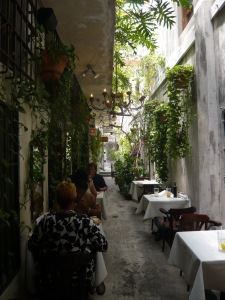
Tropical alley 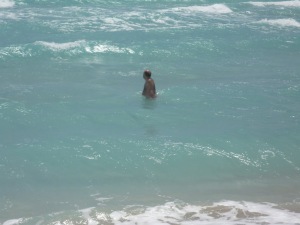
Correspondent in the ocean
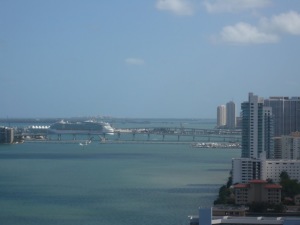
View from our aerie
In a long weekend, we saw more unusual art than we do in six months at home. Because so many wealthy people retire, or live part time in Miami, they collect. If they get really wealthy, they build their own museums – and in some rather odd locations.
In a former DEA warehouse, the Rubell Family Collection has set up shop (http://www.rubellfoundation.org/). This is a must-see when you are in Miami. Through November they are showing “30 Americans,” a challenging show that fills the 45,000-square-foot building. My favorites included the figures by Nick Cave, the disappearing letters by Glenn Ligon, and the collages by Wangechi Mutu. If I go back again this year, I will no doubt have new favorites. You can get a lot of information from the website.
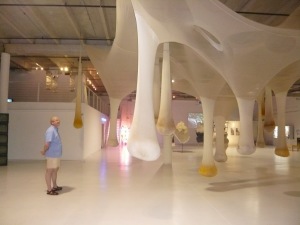
The composer sorting it out
A few blocks away, in a neighborhood that is not so gentrified, I was quite sure we were lost when we spied a warehouse with the sign reading “Fairy Shoes,” paintings of high-heeled shoes, and the surprising slogan “Shoes for the Whole Family.” But in the next block, we pulled into a warehouse parking lot where the sign said, in very small letters, “Margulies Collection.” The website (http://www.margulieswarehouse.com/) doesn’t show you very much, but the broad collection moves from blue-chip artists like Noguchi to younger folks like SF local artist Kota Ezawa. The lack of crowds (we weren’t there during the international Art Basel event, which is in December) makes it a truly contemplative experience.
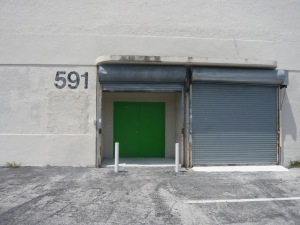
Entrance to the Margulies Collection
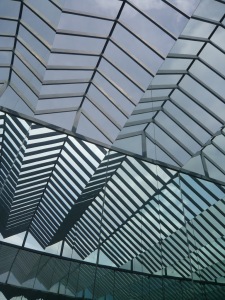
Olafur Eliasson at the Margulies Collection
For us, the highlight was a private collection that is shown publicly during Art Basel, the Sackner Archive of Visual and Concrete Poetry, which Ruth and Marvin Sackner have been collecting since the 1970s (www.rediscov.com/sacknerarchives). We probably liked it the best because we got to stay among the pieces and look at it every day. (The Sackners are huge supporters of Seraphic Fire, Miami’s professional chamber choir, and were our incredibly generous hosts for the week.) The Sackners began with Russian avant-garde (I got to sit with an original book on Yakov Chernikhov). They like art that is accessible yet often complex. And quite often funny. The journey begins shortly after you get off the elevator and head down the hallway. The visitor is surrounded by visual information in languages that are familiar but then not. When you enter the apartment, your eye is drawn out to the bay and then immediately upward as art surrounds you on two levels. Their art doesn’t confront you, rather it envelops you, welcomes you to look further and see what you might have missed at first glance. There are some well-known artists like Carl Andre and Glenn Ligon, but also an artist I knew little about, Tom Phillips, whose work is multifaceted (http://www.tomphillips.co.uk/). Upstairs, I found a piece by an old friend, Barton Benes. It is one of his famous stream-of-consciousness letters from his Aunt Evelyn. The challenge for the Sackners is cataloging this enormous collection, which numbers over 60,000 pieces. Their daughter made a wonderful documentary about them entitled Concrete. Check it out at http://www.paddedcellpictures.com/.
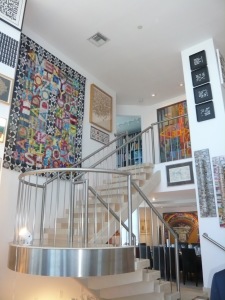
A slice of the Sackner Collection
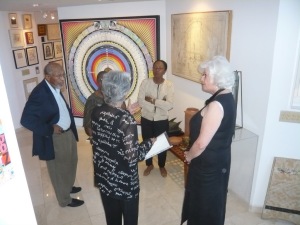
Ruth Sackner talking about the collection with some friends
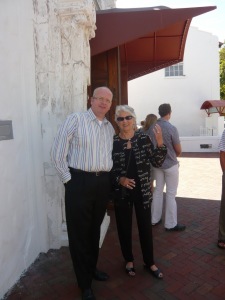
Paul Crabtree and Ruth Sackner at the concert in Miami Beach.
I would be remiss if I didn’t mention the Seraphic Fire concerts, where Paul’s new piece “Sedebat Mater” was sung exquisitely by Reggie Mobley and Teresa Wakim and of course brilliantly conducted by Patrick Quigley (http://www.seraphicfire.org/). We also met four new musicians who play baroque period instruments. I tell you, there is a lot of culture in Miami!
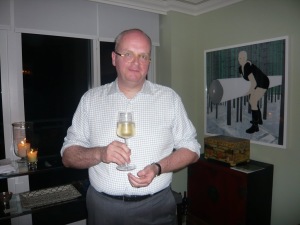
The composer at his first event of the weekend
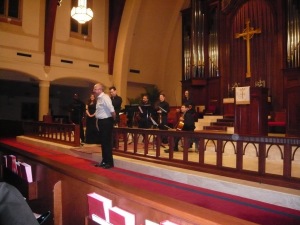
Composer taking a bow in Coral Gables
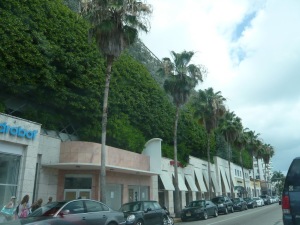
A parking garage in Miami Beach.
